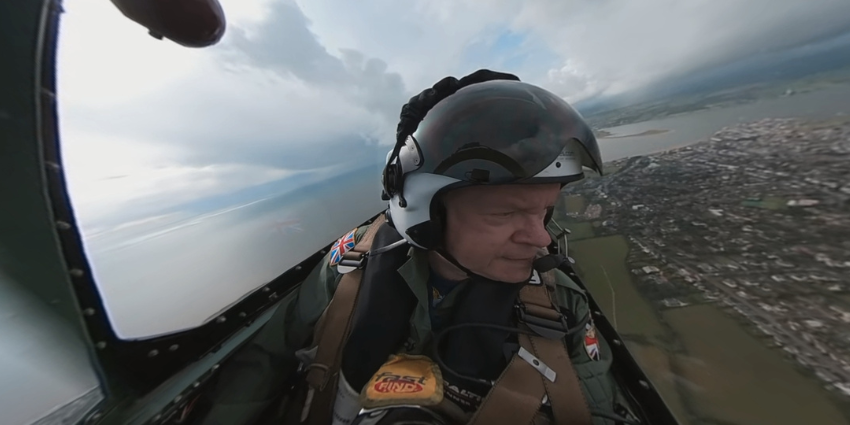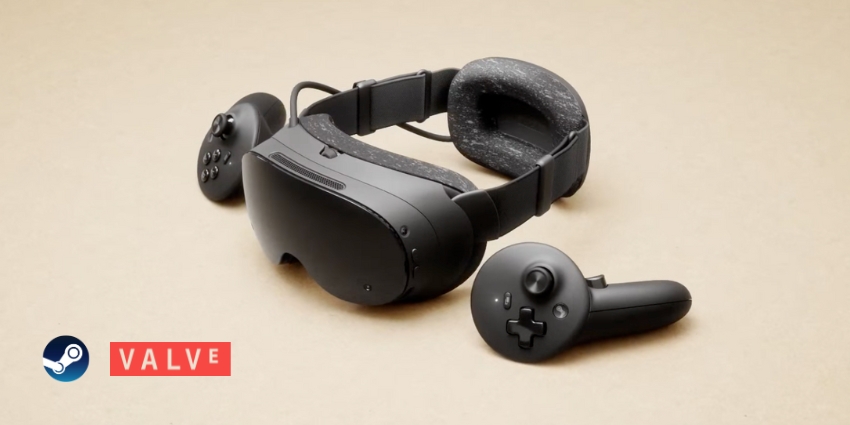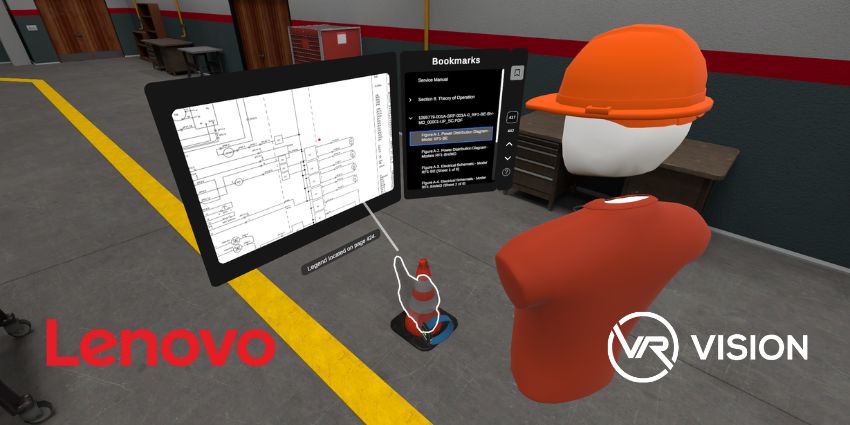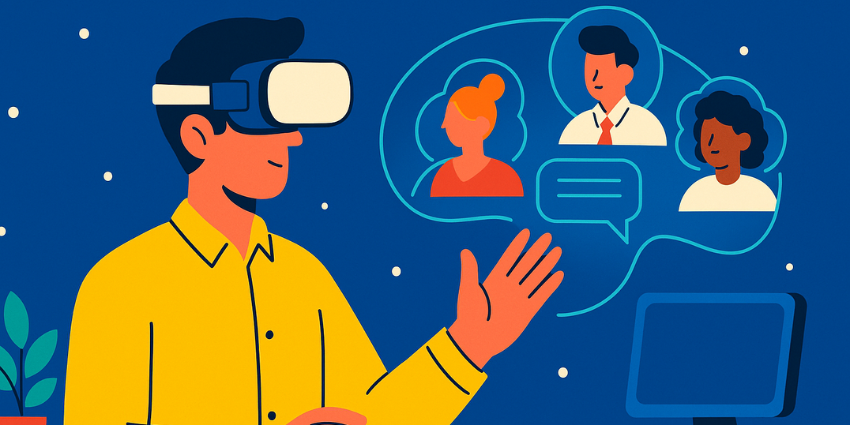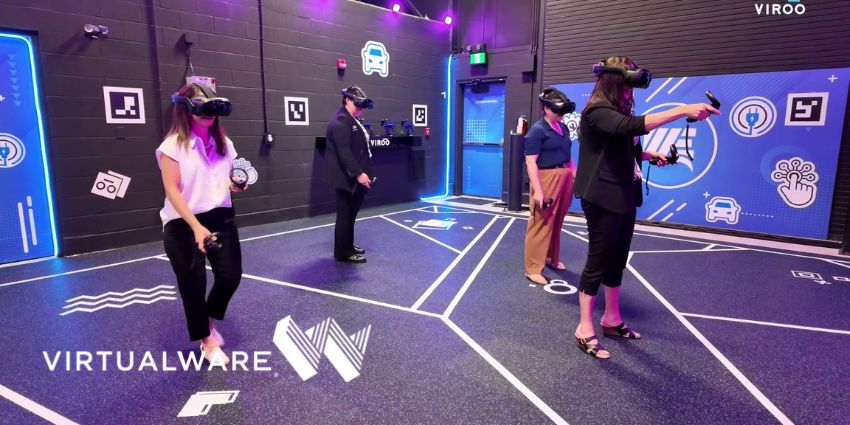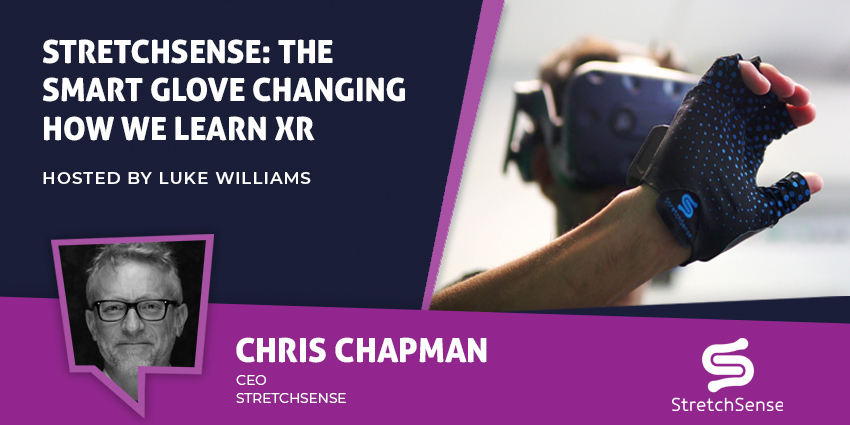In 1987, standing on solid ground at NASA Ames, Bob Stone felt his stomach churn as he ascended a virtual escalator. “My feet were firmly on the floor,” he recalls, “but the gut-churning experience was unforgettable.” That moment – clunky headset, RadioShack pocket TVs, and a massive glove – didn’t just change his career. It rewired his life.
Early Days: Telepresence to Teletact
Stone’s journey began with ergonomics and human factors, working at British Aerospace and exploring how to remove humans from hazardous North Sea environments using remotely operated vehicles. Telepresence was born. Later, a chance invitation to NASA exposed him to virtual reality’s potential – not just as flashy tech, but as a tool grounded in human factors and situational awareness.
By 1990, he co-created Teletact, the world’s first haptic feedback glove, with pneumatic animatronic expertise borrowed from Spitting Image. “It was bloody painful,” he laughs, “like holding a bag of worms.” But it proved a point: XR could be felt, not just seen.
Frustrations and Reinventions
Despite the breakthroughs, Stone is candid about his frustrations. “Wearable haptics will never deliver,” he insists. “We knew this in the ’90s, and it’s still true today.” He sees the future not in gloves or exoskeletons, but in neural haptics – brain-computer interfaces that link cognition, muscles, and senses.
This frankness carries over to XR adoption. “If you get into XR expecting to make millions, forget it,” he says. “It’s niche. Healthcare, defence, heritage – that’s where it makes sense.”
Healthcare as XR’s Real Test
Stone believes healthcare is XR’s toughest and most promising frontier. From surgical training to rehabilitation, he sees real potential – but also plenty of hype. “Surgeons love gimmicks,” he says with a wry smile, “but photos in headsets don’t equal real-world impact.”
The Metaverse? He’s Not Buying It
As for the Metaverse? Stone doesn’t mince words. “It’s hype with very little that’s tangible. No structure, no meaningful content. I tend to switch off when I see it.” For him, XR’s value comes not from grand digital utopias but from solving real problems – often in gritty, unglamorous ways.
Heritage and Human Touch
Of all his projects, Stone lights up most when talking about heritage XR – recreating shipwrecks, submarines, and Plymouth’s 1620 Barbican in vivid, sensory detail. “That’s my favourite,” he says. “Making the invisible visible.” Asked where he’d live for a week, he picks the Virtual Mayflower: “Alcoholics, ladies of the night, muck all over the floor – but a world worth exploring.”
Personality Through Quick Fire
Worlds or tools? “Worlds, without a doubt.”
First XR smell? “Aviation fuel – essential for realism.”
Funniest demo reaction? “People crawling under virtual tables that weren’t there.”
His journey in three words? “A rollercoaster ride.”
Closing
Now an Emeritus Professor, XR Hall of Fame inductee, and self-described “psychologist by profession,” Stone shows no sign of slowing down. He carries the mental and physical scars of 38 years in XR but remains a believer – not in hype, but in XR’s power to extend human reach, preserve history, and, occasionally, make us laugh.
